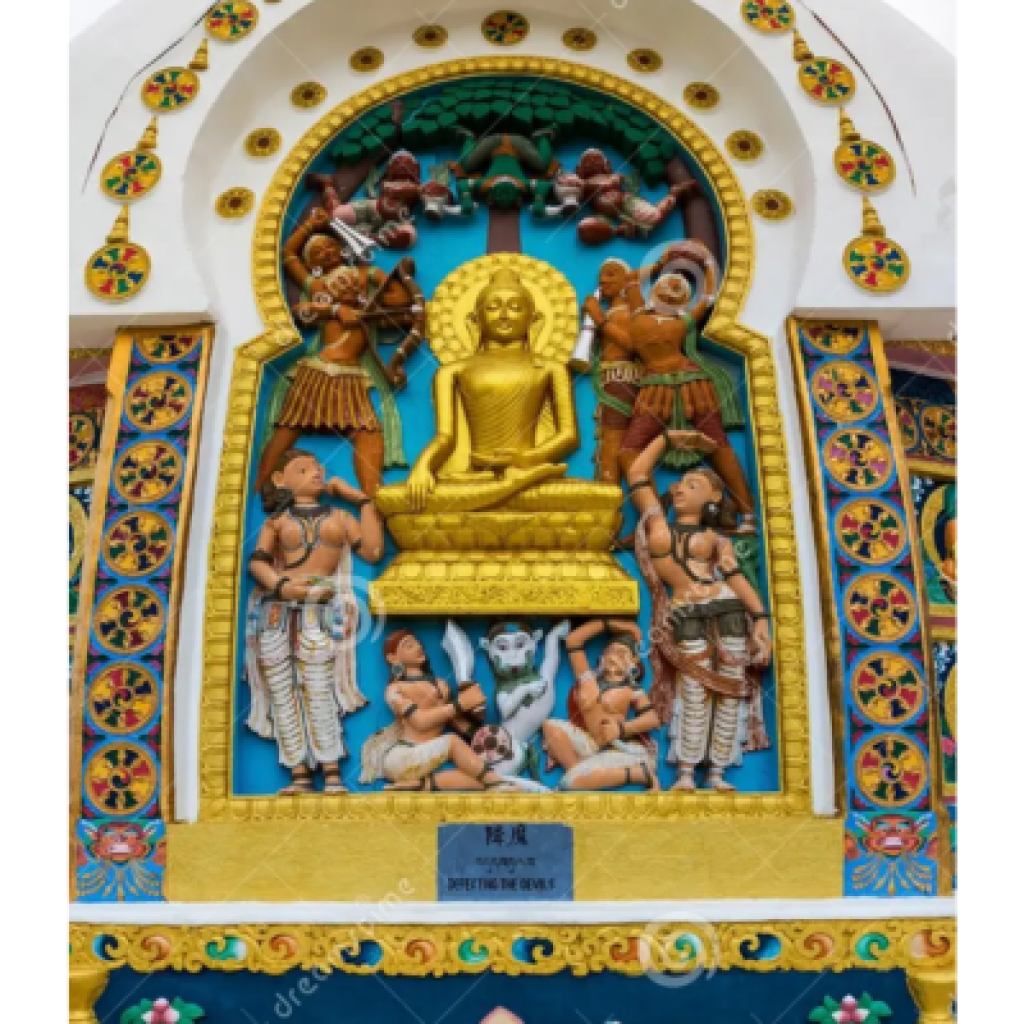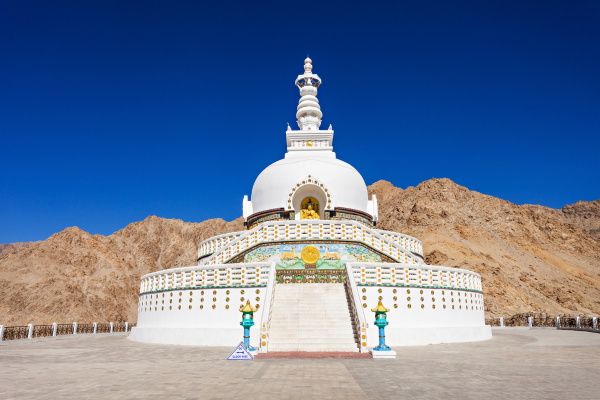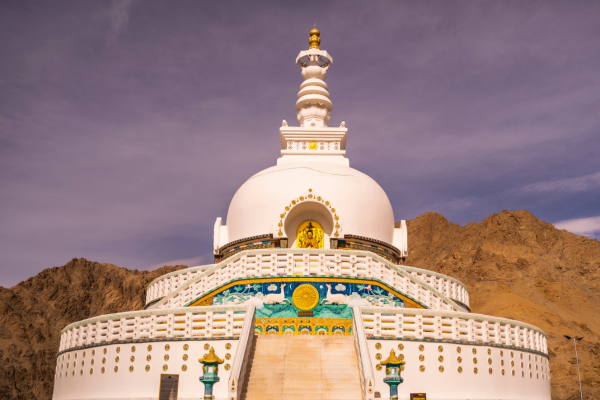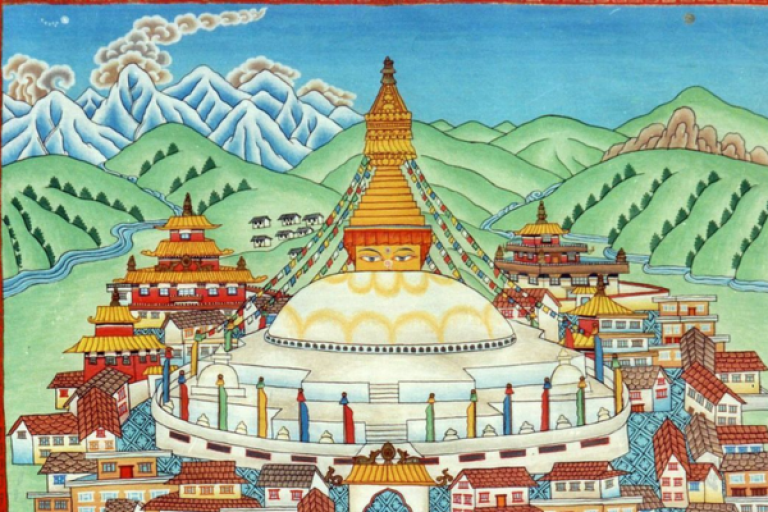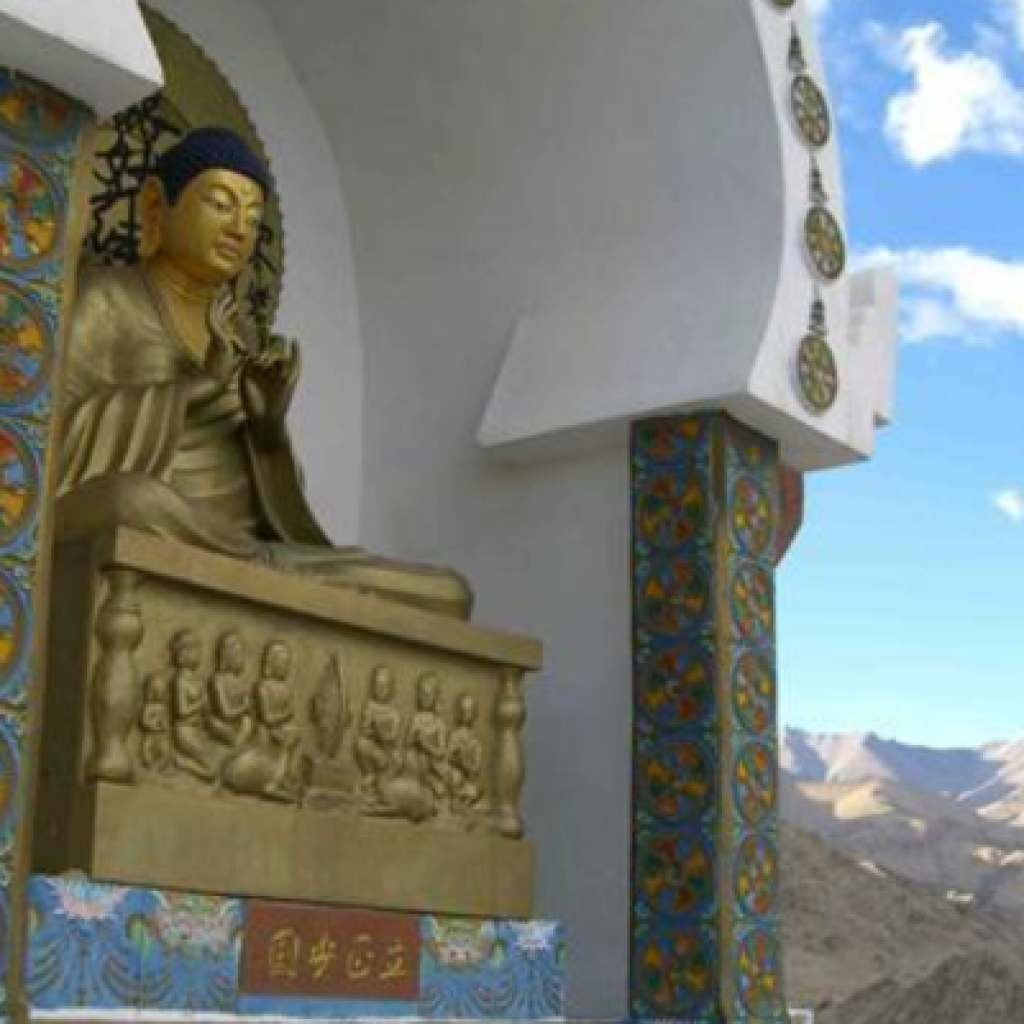History and Significance
History and Significance
Construction and Inception
- Built in 1991: The Shanti Stupa was inaugurated in 1991, though the initial foundation stone was laid in 1983 by the Japanese Buddhist monkGyomyo Nakamura. The stupa was built with the vision to promote world peace and to mark the 2000th anniversary of Buddhism.
- Symbol of Peace: The stupa was constructed as part of an effort to spread the message of peace and non-violence, and it serves as a symbol of Buddhist spirituality. It is one of many Shanti stupas built in the Himalayas, inspired by the teachings of Buddhism.
- Collaborative Effort: The construction of the stupa was a collaborative effort involving both Japanese Buddhists and local Ladakhi Buddhists.
Spiritual Importance
- The Shanti Stupa holds deep spiritual significance, not just for the Buddhists in Ladakh but also for travelers from around the world who visit to meditate, reflect, and find a sense of peace.
- The stupa is also home to relics of the Buddha, including bone fragments and other sacred artifacts, which were enshrined as a part of the stupa’s construction.
